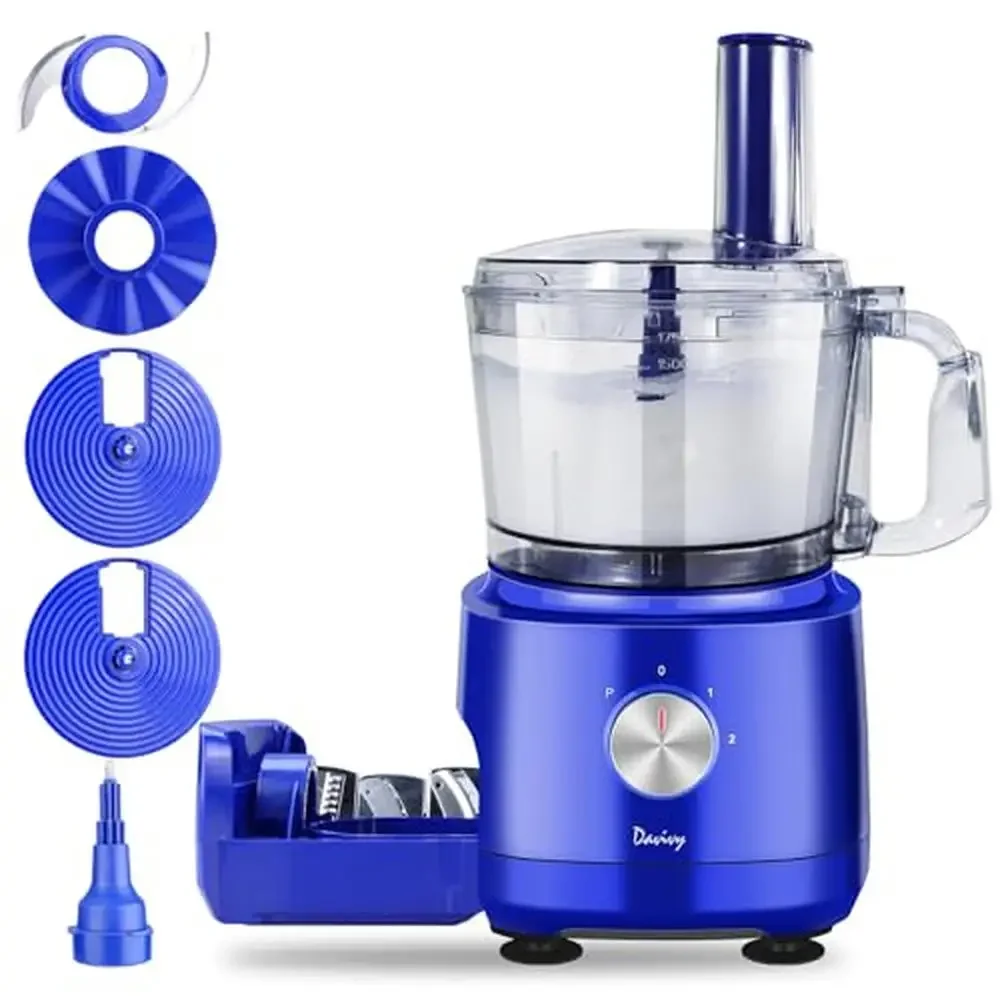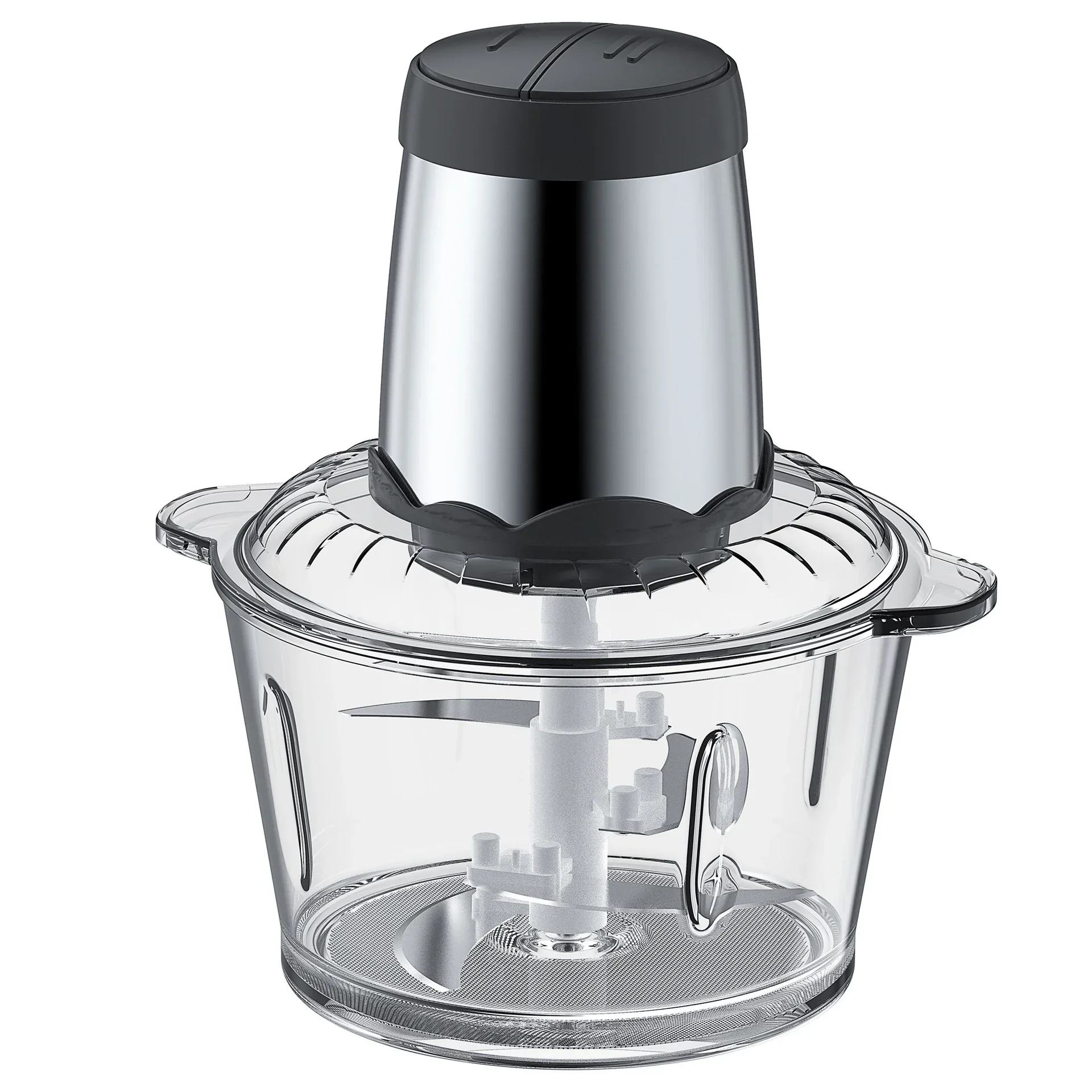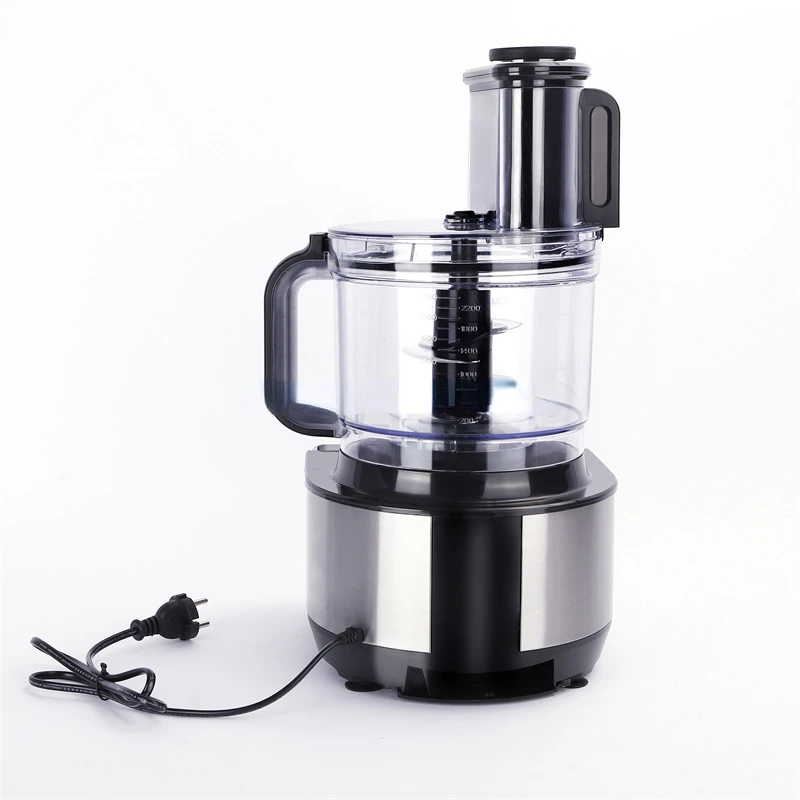Smoothies have become a staple in many households, prized for their convenience, nutritional value, and delicious flavor combinations. Traditionally, blenders are the go-to appliance for creating these vibrant drinks. However, not everyone has a high-powered blender at hand, leading many to wonder: Can I make a smoothie in a food processor? The answer is a resounding yes! A food processor can indeed whip up a smooth and satisfying beverage, provided you know how to optimize its use. This article delves into the nuances of making smoothies with a food processor, exploring techniques, advantages, potential challenges, and tips to ensure your smoothie game remains strong even without a blender.
Preparing Your Food Processor for Smoothie Making
Selecting the Right Bowl and Blades
To make a smoothie in a food processor, start by ensuring you have the appropriate bowl and blades. Use the standard chopping blade rather than the shredding or slicing attachments. The chopping blade is designed to pulverize ingredients into a fine consistency, which is essential for smooth smoothie textures.
Assembling the Ingredients
Fruits and Vegetables: Fresh or frozen fruits and vegetables form the base of your smoothie. Common choices include bananas, berries, spinach, kale, mangoes, and pineapples.
Liquids: Adding a liquid helps in blending the ingredients smoothly. Options include water, milk, almond milk, coconut water, or juice.
Protein and Healthy Fats: For added nutrition, consider incorporating ingredients like Greek yogurt, nut butters, chia seeds, or flaxseeds.
Sweeteners and Flavorings: To enhance the taste, you can add honey, maple syrup, vanilla extract, or spices like cinnamon and nutmeg.
Layering Ingredients Properly
Proper layering is essential to ensure even blending and to avoid overworking the motor. Start by adding the liquids first, followed by softer ingredients like yogurt or nut butters, and then the fruits and vegetables. Place the ice or frozen ingredients on top. This order helps the blades move freely and blend everything smoothly.
Step-by-Step Guide to Making Smoothies in a Food Processor
Step 1: Measure and Add Liquids
Begin by measuring the desired amount of liquid into the food processor bowl. Adding liquids first helps create a vortex that facilitates the blending of other ingredients. Typically, about one to two cups of liquid serve as a good base for a single smoothie serving.
Step 2: Incorporate Soft Ingredients
Next, add soft ingredients such as yogurt, milk, or nut butters. These components add creaminess and contribute to the nutritional profile of your smoothie.
Step 3: Add Fruits and Vegetables
Add your chosen fruits and vegetables to the bowl. If using frozen produce, you might need to blend in smaller batches or let the ingredients thaw slightly to aid the blending process.
Step 4: Include Ice or Frozen Ingredients
For a chilled smoothie, add ice cubes or frozen fruits. This not only cools the smoothie but also adds to its thickness and texture. However, be cautious not to overload the processor, as excessive ice can strain the motor.
Step 5: Blend in Pulses
Instead of blending continuously, use pulse settings. Pulsing allows better control over the texture, ensuring that ingredients are evenly blended without overprocessing. It also helps prevent overheating the food processor.
Step 6: Check Consistency and Adjust
After initial blending, check the smoothie’s consistency. If it’s too thick, add more liquid and pulse again. If it’s too thin, add more frozen ingredients or a banana to thicken it up.
Step 7: Serve and Enjoy
Once the desired consistency is achieved, pour the smoothie into a glass and enjoy immediately. For added flair, garnish with fresh fruit slices, a sprinkle of seeds, or a drizzle of honey.
Tips for Achieving a Smooth Texture
Use Frozen Fruits
Frozen fruits help create a thick, creamy texture without the need for ice, which can dilute the flavor. Common frozen fruits for smoothies include berries, banana slices, and mango chunks.
Balance Liquid Ratios
Finding the right balance of liquid is crucial. Too much liquid can make the smoothie runny, while too little can result in a gritty texture. Start with a smaller amount of liquid and gradually add more as needed.
Blend in Smaller Batches
If your food processor struggles with large quantities, blend the ingredients in smaller batches. This ensures that everything is adequately processed without overburdening the machine.
Add Ingredients in the Right Order
As mentioned earlier, layering ingredients correctly aids in efficient blending. Proper order minimizes the load on the motor and ensures a smooth, even texture.
Incorporate Soft and Hard Ingredients Thoughtfully
Soft ingredients like bananas and yogurt blend more easily, while harder items like ice or frozen fruits require careful processing. Alternating between soft and hard ingredients can help achieve a balanced texture.
Overcoming Challenges When Using a Food Processor
Dealing with Chunky Consistencies
Food processors may not achieve the same level of smoothness as high-powered blenders. To mitigate this, ensure your ingredients are finely chopped before blending. Alternatively, strain the smoothie through a fine mesh sieve to remove any remaining chunks.
Avoiding Overheating the Motor
Prolonged blending can cause the food processor’s motor to overheat. To prevent this, blend in short bursts, allowing the motor to rest between intervals. Additionally, avoid overfilling the bowl to reduce strain.
Preventing Leaks and Spills
Food processors are not always as sealed as blenders, which can lead to leaks, especially when blending thicker mixtures. Start blending at a lower speed and gradually increase to prevent sudden pressure buildup. You can also cover the lid with a kitchen towel to catch any potential spills.
Ensuring Even Blending
To achieve an even blend, stop the processor occasionally and scrape down the sides with a spatula. This ensures all ingredients are uniformly processed and prevents any unblended pockets.
Enhancing Your Smoothie Recipes
Incorporating Superfoods
Boost the nutritional value of your smoothies by adding superfoods like spirulina, maca powder, or acai berries. These ingredients provide additional vitamins, minerals, and antioxidants.
Experimenting with Flavors
Don’t be afraid to experiment with different flavor combinations. Mix sweet and savory elements, such as adding a handful of spinach to a berry smoothie, or incorporate spices like ginger and turmeric for an extra kick.
Adding Protein Boosters
For a more filling smoothie, incorporate protein sources like Greek yogurt, protein powder, or silken tofu. These additions make your smoothie a more substantial meal option.
Using Healthy Fats
Incorporate healthy fats to enhance flavor and texture. Avocado, chia seeds, and flaxseeds are excellent choices that provide omega-3 fatty acids and promote satiety.
Storing and Preserving Smoothies
Best Practices for Storage
If you’re preparing smoothies in advance, store them in airtight containers to preserve freshness. Glass jars with tight-fitting lids are ideal for this purpose.
Freezing Smoothies
Smoothies can be frozen for later consumption. Pour the smoothie into ice cube trays or freezable containers and store them in the freezer. When ready to drink, thaw the smoothie in the refrigerator or blend it again for a smoother consistency.
Reheating Smoothies
If your smoothie has been refrigerated or frozen, you might need to re-blend it to restore its original texture. Adding a bit of extra liquid can help achieve the desired consistency.
 Advantages of Using a Food Processor for Smoothies
Advantages of Using a Food Processor for Smoothies
Multifunctionality
A significant advantage of using a food processor is its multifunctionality. Beyond making smoothies, it can handle a variety of kitchen tasks, making it a valuable addition to any kitchen arsenal.
Cost-Effectiveness
Food processors are often more affordable than high-powered blenders, offering a budget-friendly alternative for those looking to create smoothies without investing in multiple appliances.
Ease of Cleaning
Food processors typically have fewer parts compared to blenders, making them easier to clean. Most models have dishwasher-safe components, simplifying the cleanup process after smoothie preparation.
Versatility in Texture Control
The controlled blending environment of a food processor allows for greater versatility in texture. Whether you prefer a chunky or smooth smoothie, a food processor can accommodate your preference with precise adjustments.
Conclusion: Can I Make a Smoothie in a Food Processor?
In summary, Can I make a smoothie in a food processor? Yes, you can! While blenders are traditionally favored for their ability to create smooth, liquid-based mixtures efficiently, food processors offer a versatile and cost-effective alternative for smoothie making. By understanding the differences between these appliances and implementing the right techniques, you can achieve delicious and nutritious smoothies using your food processor. Whether you’re looking to whip up a quick breakfast, a post-workout boost, or a healthy snack, your food processor can be a reliable kitchen companion in creating a variety of smoothie recipes. Embrace the flexibility of your food processor and explore the endless possibilities of smoothie making it offers.



